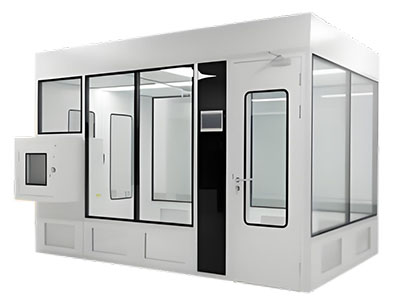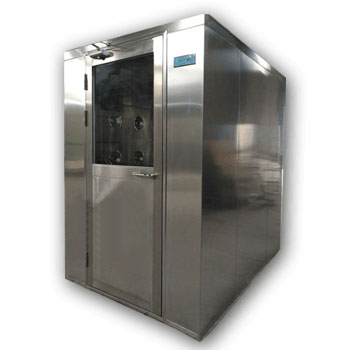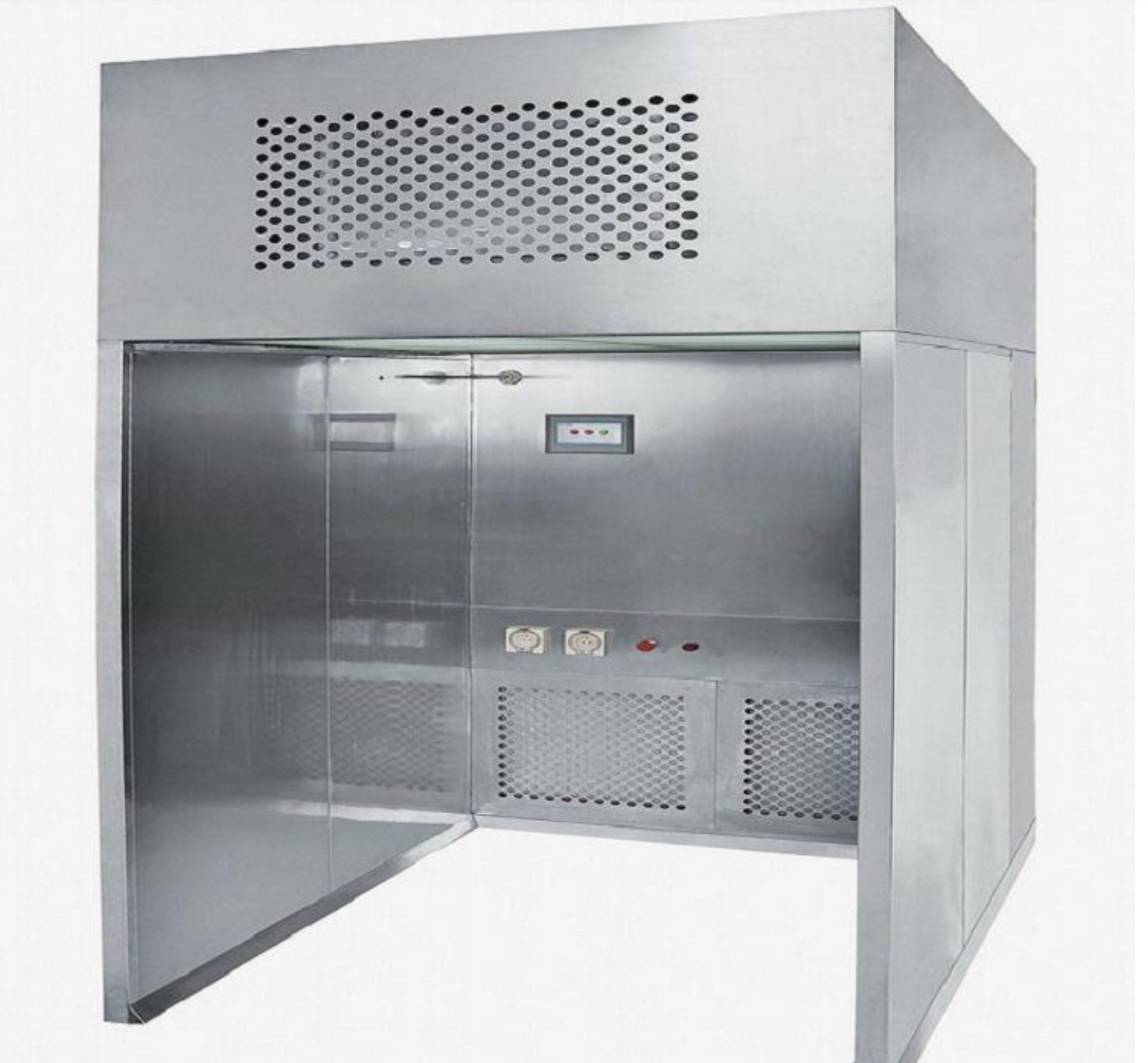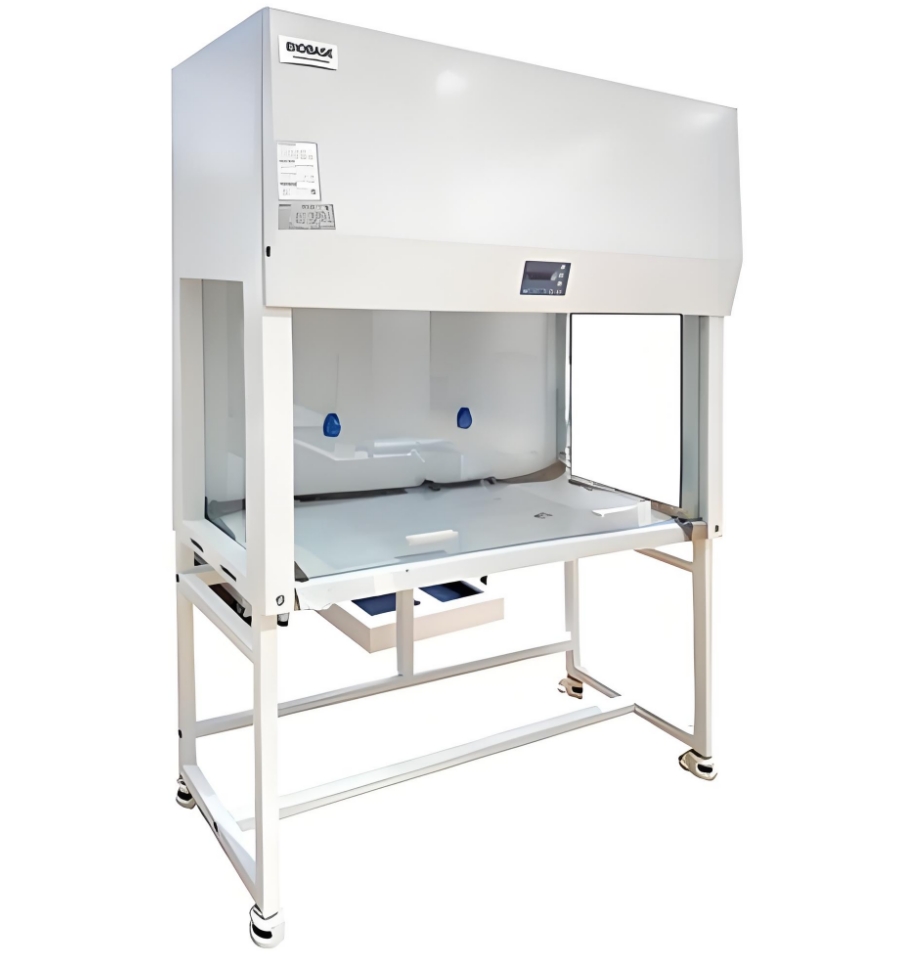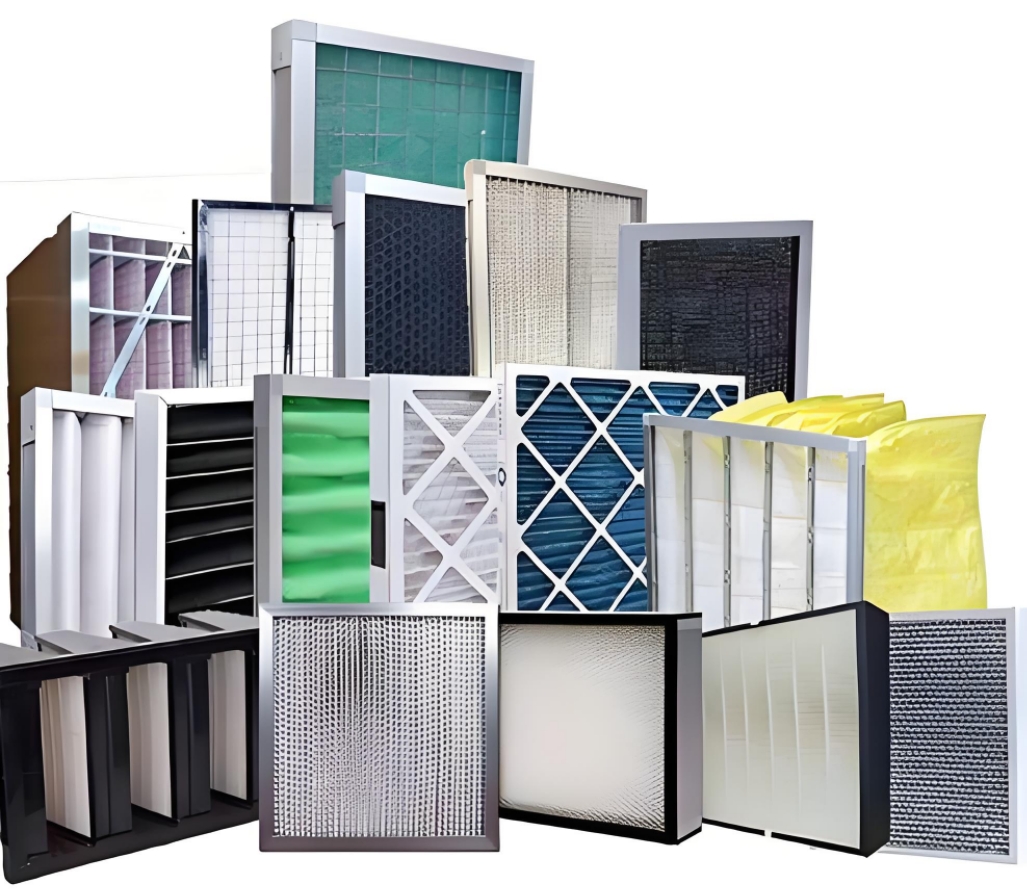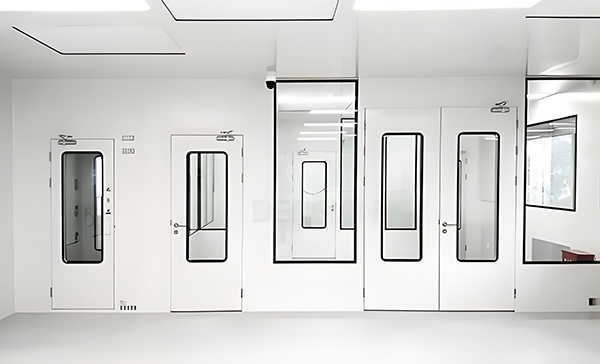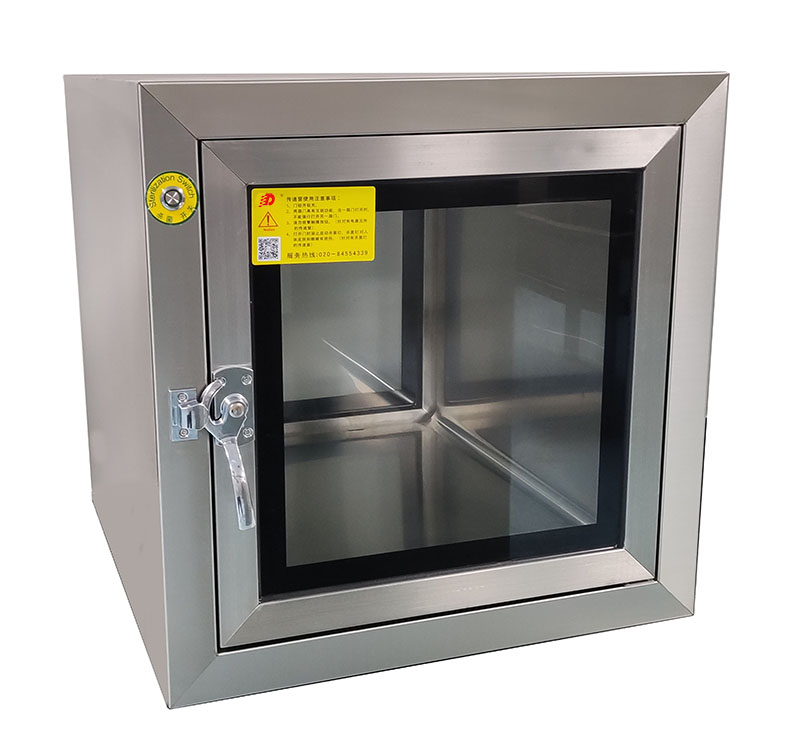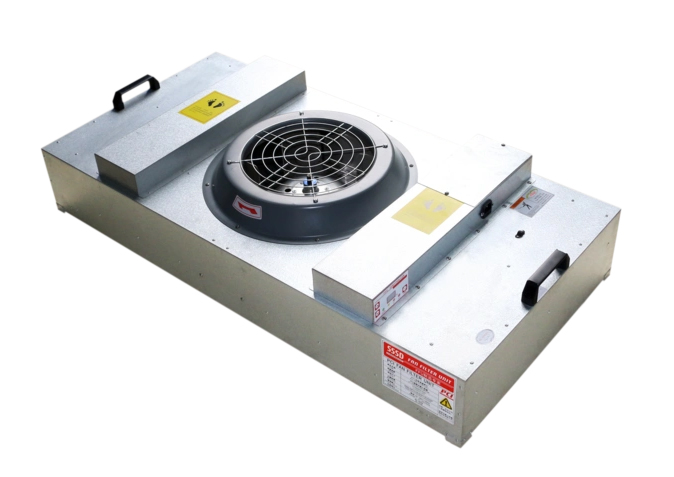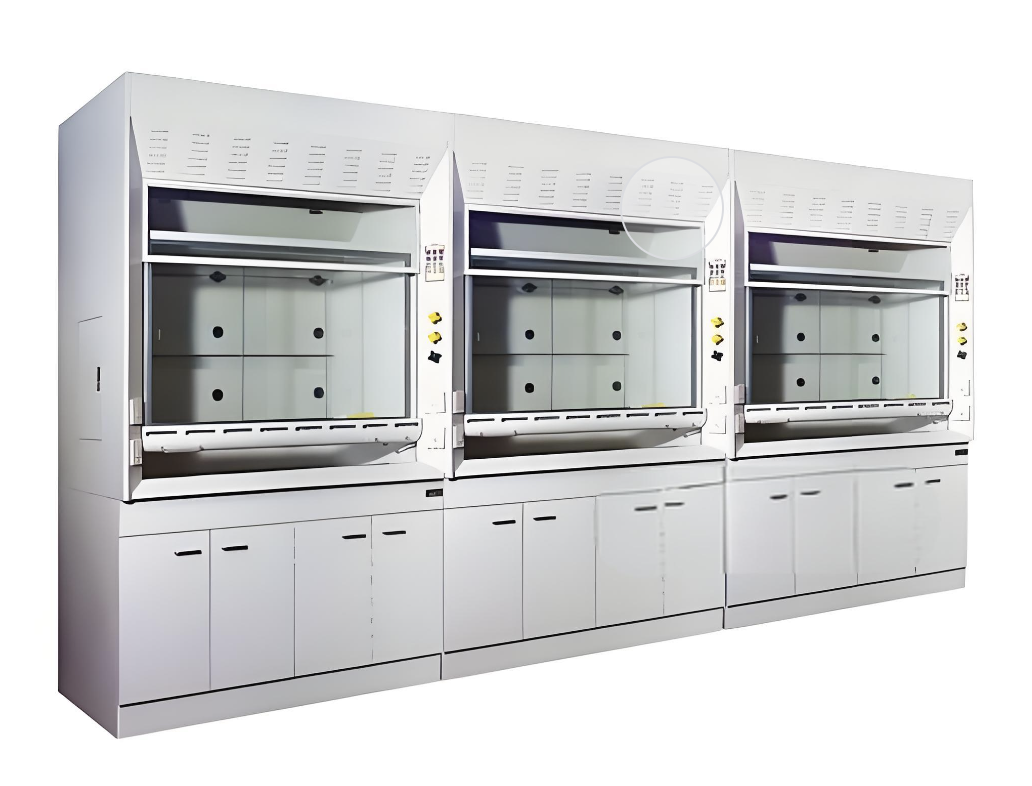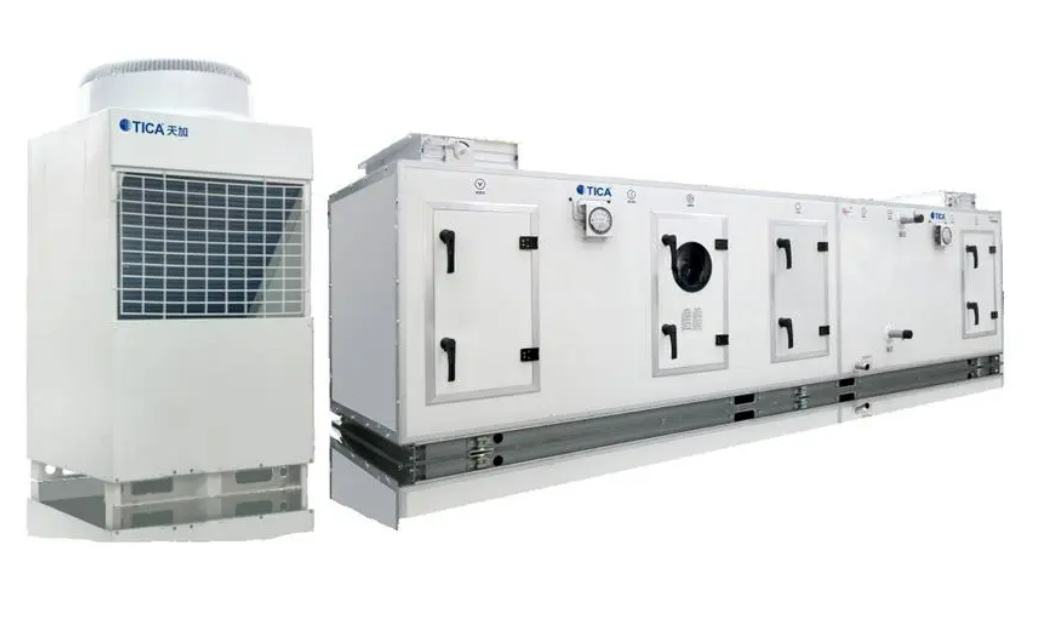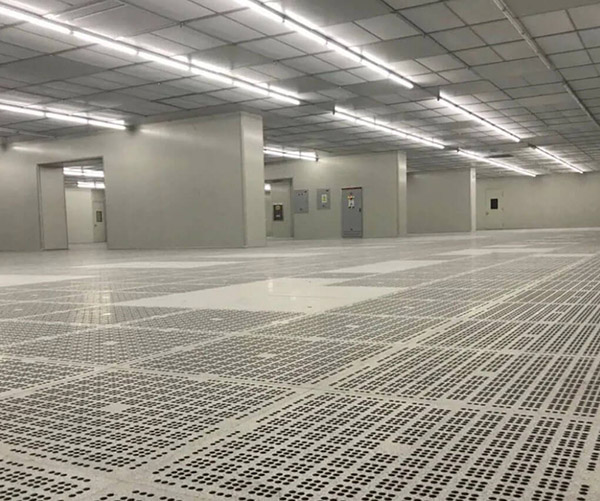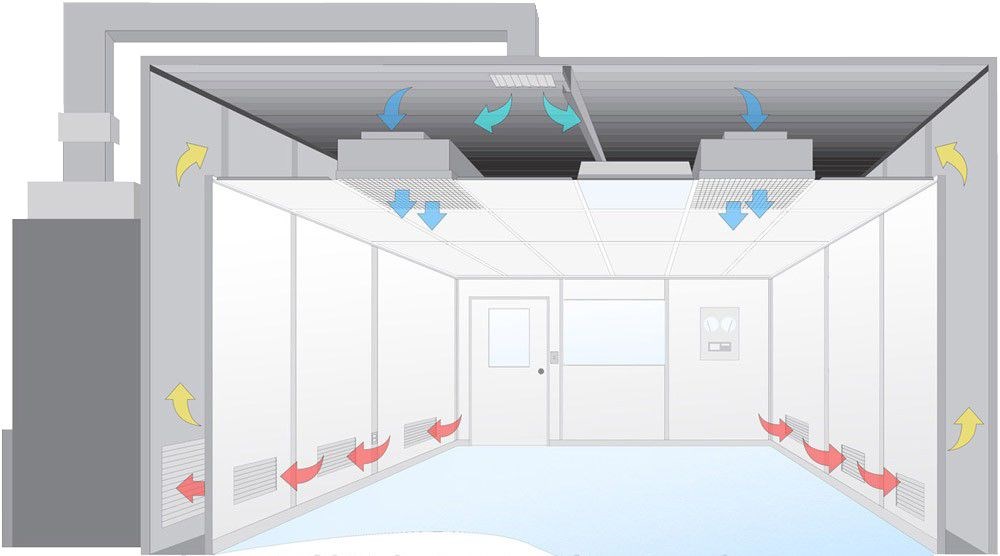A comprehensive guide to the classification and management of cleanrooms across various industries
What is ISO 14644?
ISO 14644 outlines a comprehensive set of standards used to establish cleanliness levels in cleanrooms. It ensures that controlled environments maintain air quality standards essential for contamination-sensitive processes. The series encompasses everything from air cleanliness particle counts to operational procedures necessary to sustain those environments. These guidelines support industries in meeting global cleanliness and operational benchmarks.
iso 14644-1
Latest Version: 2015. ISO 14644-1 is the foundational standard for cleanliness classifications regarding airborne particles in cleanrooms. It sets the criteria for particle concentration numbers, determining environmental suitability for specific uses.
Updated versions refine measurement techniques and standards, enabling precise validation of cleanroom areas to meet operational demands for contamination control and product integrity.
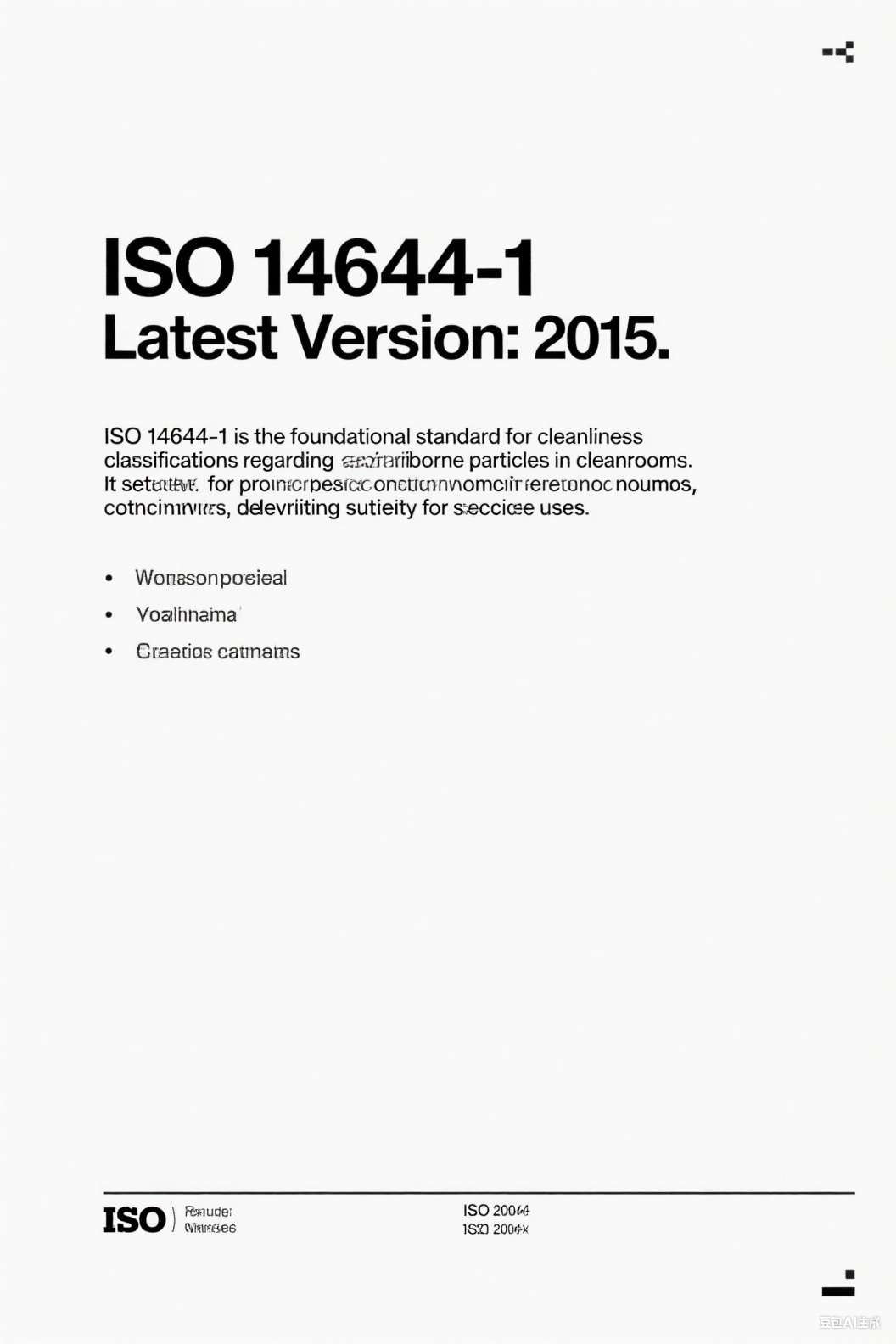
Airborne Particle Measurement in Cleanrooms
ISO/DIS 14644-1.2 (2014)
Latest Version: Draft 2014. This draft serves as an update, focusing on enhancing the methodologies used for particle counting and classification.
It aims to integrate the latest technological advancements into the standard, allowing for more accurate and reliable cleanroom assessments to ensure optimal operating conditions are maintained.
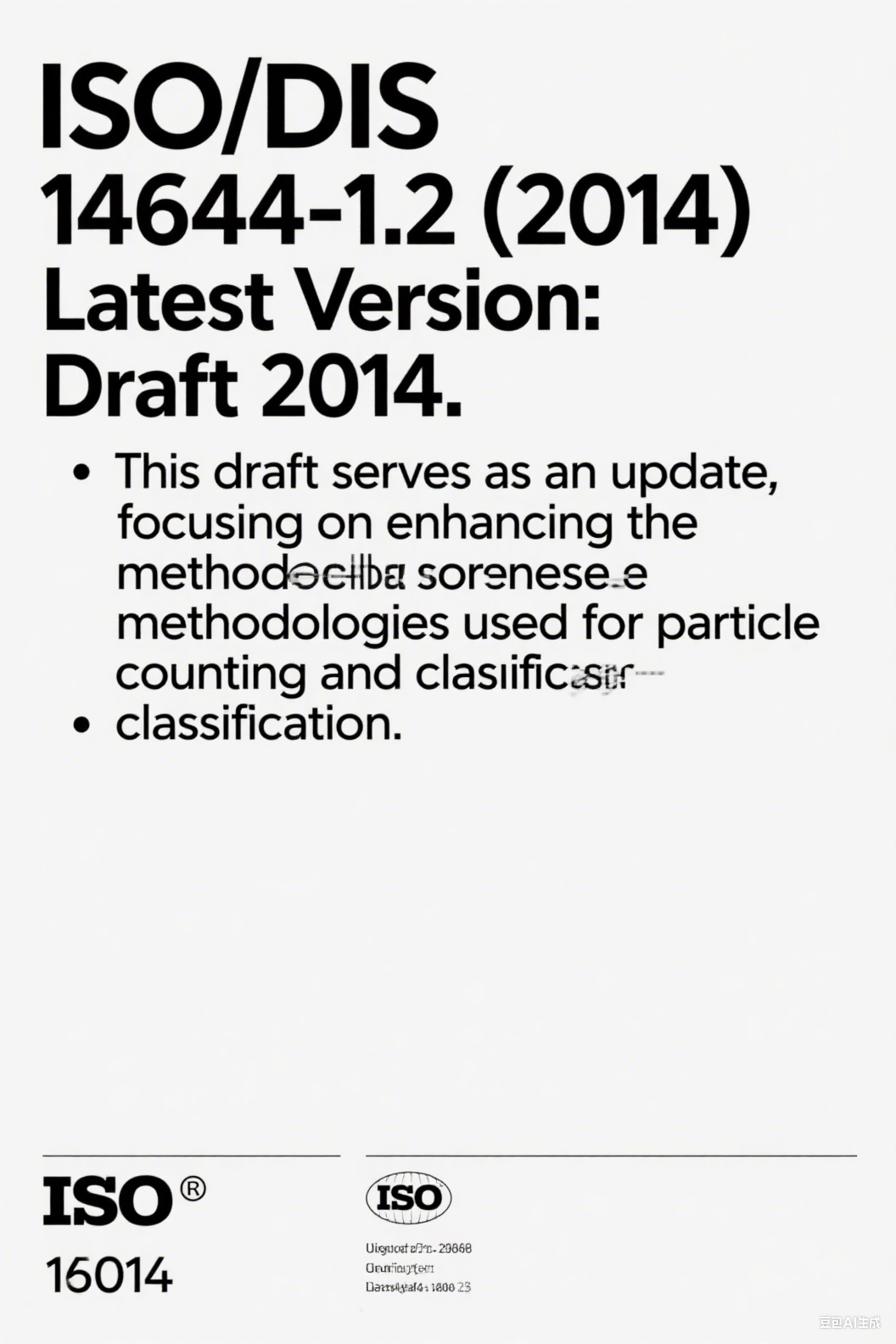
Particle Counting Technology
iso 14644-2
Latest Version: 2015. This standard complements ISO 14644-1 by detailing the required methodology for monitoring and demonstrating compliance with specified cleanliness levels over time.
It provides clear guidance on the validation strategies and routine testing necessary to maintain CleanRoom Classifications. This ensures that air cleanliness is continually met, aiding in sustained operational quality.
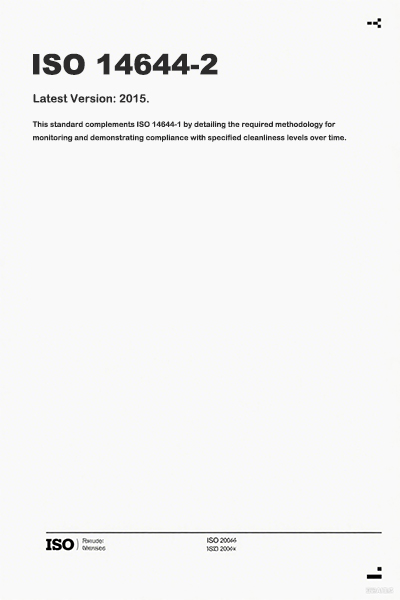
Cleanroom Monitoring Equipment
ISO/DIS 14644-2.2 (2014)
Latest Version: Draft 2014. The draft for ISO/DIS 14644-2.2 intends to enhance monitoring protocols, introducing advanced technologies to further assure performance consistency in cleanroom operations.
By focusing on technological integration, the draft underscores the importance of precision in maintaining ongoing compliance with air quality standards.
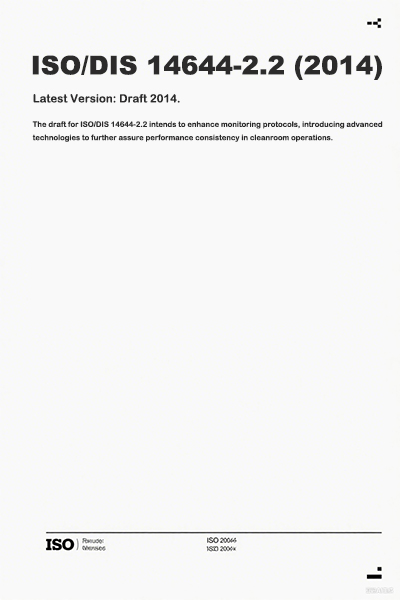
Advanced Monitoring Technologies
ISO 14644-3
Latest Version: 2019. This standard outlines the test methods for cleanrooms' and clean zones' performance verification.
It covers procedures like airborne particle counting, airflow measurement, and filter integrity testing. These methods are crucial for initially validating and periodically verifying that cleanrooms continue to meet their designated criteria, thus safeguarding the controlled environments.
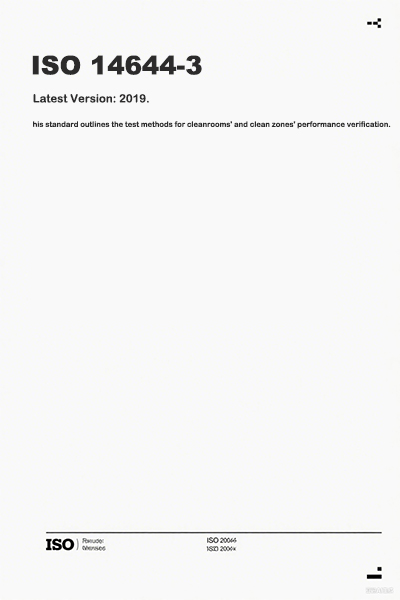
Cleanroom Performance Testing
ISO 14644-4
Latest Version: 2001. iso 14644-4 details the specifications for the design, construction, and startup processes for cleanrooms.
It includes information on selecting materials and systems suited to maintain the desired controlled conditions. It provides the framework for building infrastructures that meet cleanliness and operational standards necessary for high-purity processes.
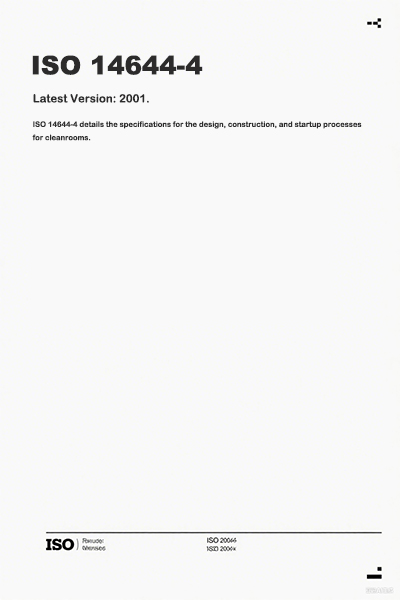
Cleanroom Design and Construction
iso 14644-5
Latest Version: 2004. This section focuses on operational procedures essential for maintaining cleanrooms.
It encompasses protocols for personnel behavior, hygiene, cleaning, and contamination control practices designed to preserve the air cleanliness levels. These operational guidelines are foundational to consistent and effective cleanroom management.
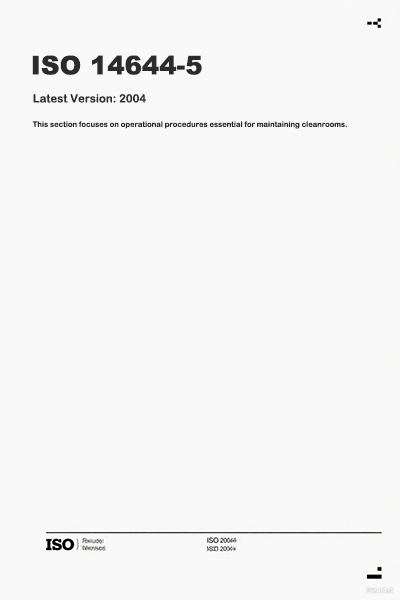
Cleanroom Operational Procedures
ISO 14644-6
Latest Version: 2007. ISO 14644-6 serves as a standard vocabulary for cleanroom terminology.
It promotes clear and consistent communication by defining terms critical to the design and management of cleanrooms. This clarity ensures mutual understanding across international and interdisciplinary teams involved in cleanroom operations and design.

Cleanroom Terminology and Standards
iso 14644-7
Latest Version: 2004. Focused on separative devices such as clean air hoods and mini-environments, ISO 14644-7 provides specifications for equipment used to ensure cleaner areas within cleanrooms.
These devices help isolate environments, offering additional control for critical processes where heightened cleanliness is required.
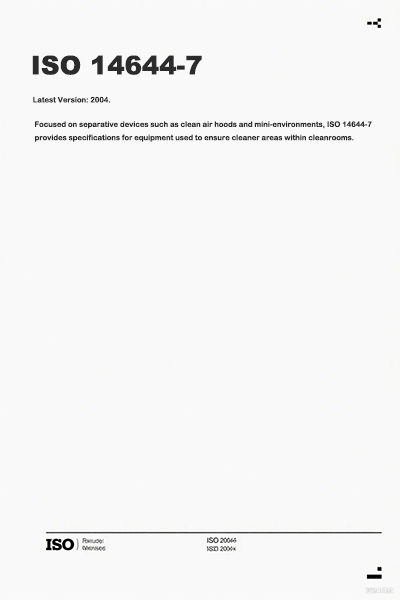
Cleanroom Separative Devices
ISO 14644-8
Latest Version: 2006. This standard addresses airborne molecular contamination (AMC) in cleanrooms and associated environments.
It outlines the requirements for identifying and mitigating AMCs, which are critical in sectors like semiconductors, where molecular purity impacts product reliability and performance.
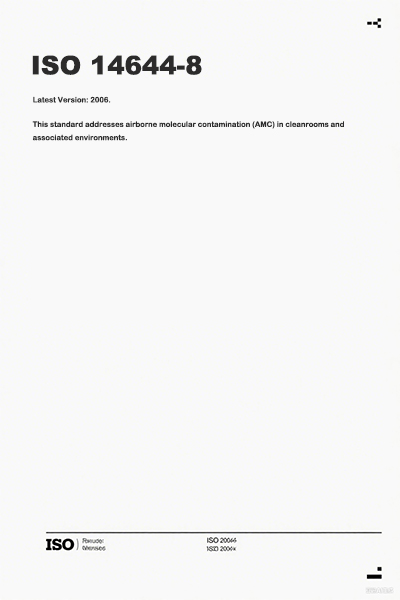
Airborne Molecular Contamination Control
ISO 14644-9
Latest Version: 2012. ISO 14644-9 focuses on the classification of surface particle cleanliness in cleanrooms.
It offers guidelines for assessing and managing particulate cleanliness on surfaces, ensuring that even the tiniest particles are controlled to prevent product contamination and defects.
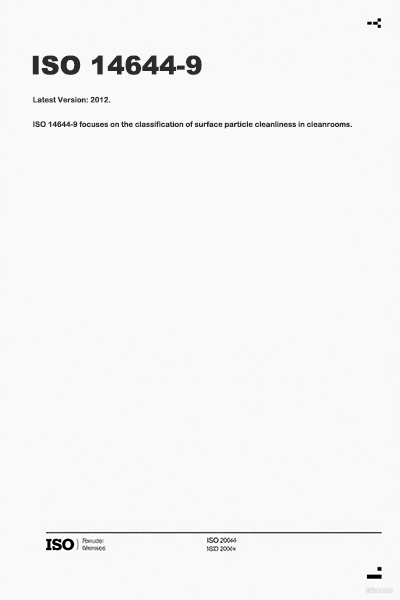
Surface Particle Cleanliness Assessment
ISO 14644-10
Latest Version: 2013. This part of the standard addresses cleanliness in terms of chemical contamination.
It provides criteria and methodologies for assessing and controlling chemical contaminants in cleanroom environments, ensuring that chemical levels remain within safe limits for product and personnel safety.
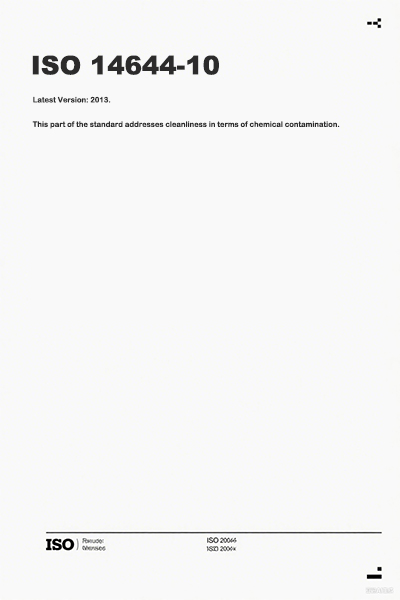
Chemical Contamination Control
ISO 14644-12
Latest Version: 2018. ISO 14644-12 focuses on specifying clean surface cleanliness in various controlled environments.
It provides guidelines for evaluating and managing the cleanliness of surfaces to prevent contamination that can lead to product defects or operational inefficiencies. By establishing criteria for surface cleanliness, this standard complements airborne particle cleanliness requirements, enhancing overall environmental control.

Surface Cleanliness Standards
ISO 14644-13
Latest Version: 2017. ISO 14644-13 addresses the cleaning of aerospace components during assembly.
The standard helps ensure that cleanliness levels are maintained to support the proper functioning of aerospace components. It specifies levels of cleanliness required at various stages of the aerospace assembly process.
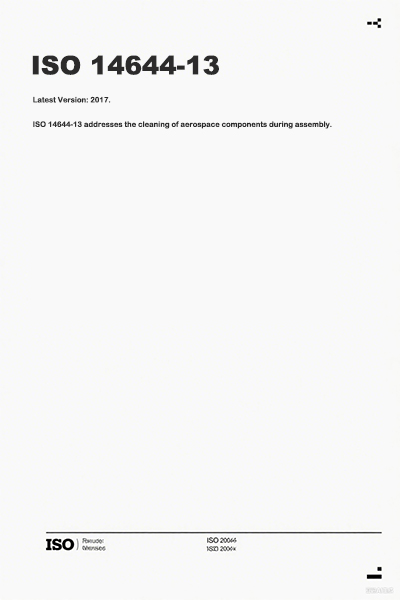
Aerospace Component Cleaning
ISO 14644-14
Latest Version: 2016. ISO 14644-14 deals with the assessment of suitability for intended use of equipment in cleanrooms.
It provides guidelines for evaluating equipment like air-handling systems and the associated filters, assessing their effectiveness in maintaining cleanliness. The standard assists in validating and verifying that equipment can achieve and maintain the necessary cleanliness levels for a cleanroom environment.
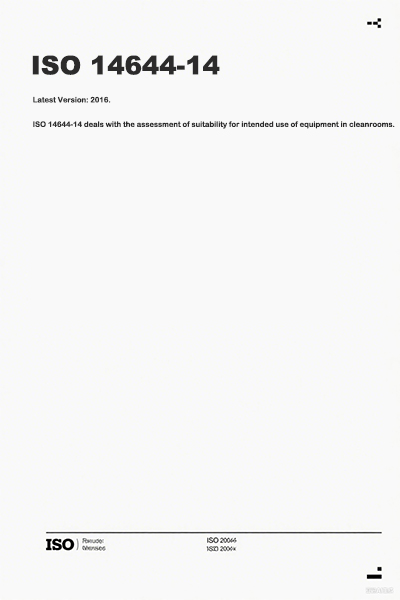
Cleanroom Equipment Assessment
ISO 14644-15
Latest Version: 2017. This part focuses on establishing and implementing energy-efficient procedures for cleanroom operational management.
It outlines practices that help balance energy use with cleanliness standards, reducing operational costs while maintaining compliance with cleanliness requirements. ISO 14644-15 emphasizes optimizing HVAC and air filtration systems to achieve energy efficiency.
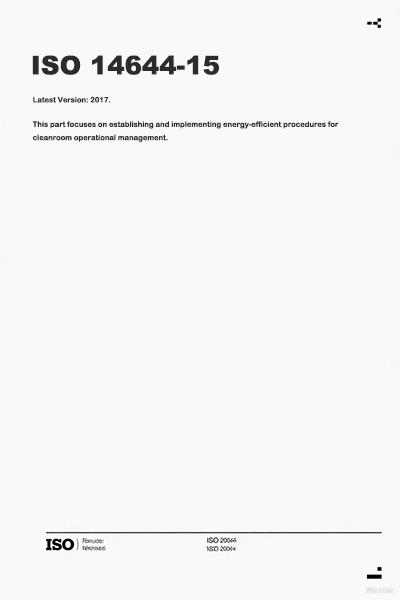
Energy-Efficient Cleanroom Operations
ISO 14644-17
Latest Version: 2020. ISO 14644-17 deals with the particle deposition cleanliness metric (PDCM), which represents settled particles over specific timeframes.
This novel standard provides a method to evaluate and monitor particle deposition in clean environments. By focusing on particle deposition, this standard allows for proactive management of settled particulate contamination.
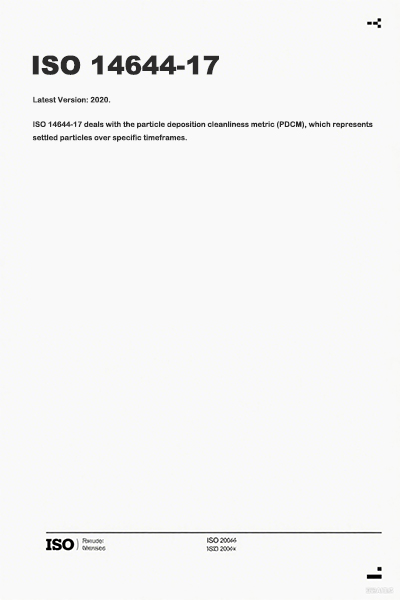
Particle Deposition Measurement
ISO 14644-18
Latest Version: 2021. This part addresses the test methods for characterizing cleanrooms' air dispersal performance.
It provides guidance on testing to determine how cleanrooms handle air distribution, ensuring consistency in maintaining particulate cleanliness levels. Through detailed assessment of air dispersal mechanisms, ISO 14644-18 ensures that cleanrooms' air systems operate optimally.
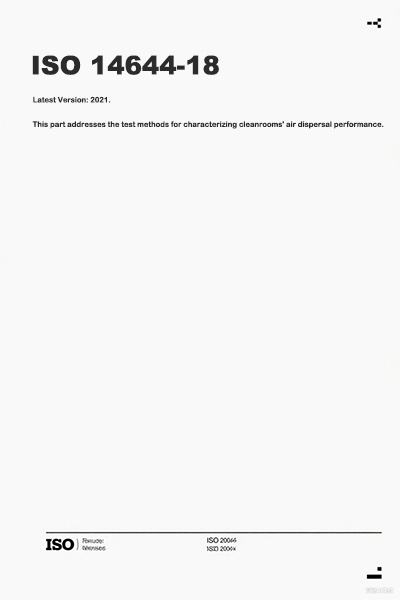
Air Dispersal Performance Testing
ISO/TR 14644-21
Latest Version: 2018. ISO/TR 14644-21 offers guidance on the implementation of risk management principles in cleanrooms.
It focuses on identifying risks associated with contamination and developing mitigation strategies that align with operational goals and regulatory requirements. The standard provides a robust framework for integrating risk management into cleanroom operations.
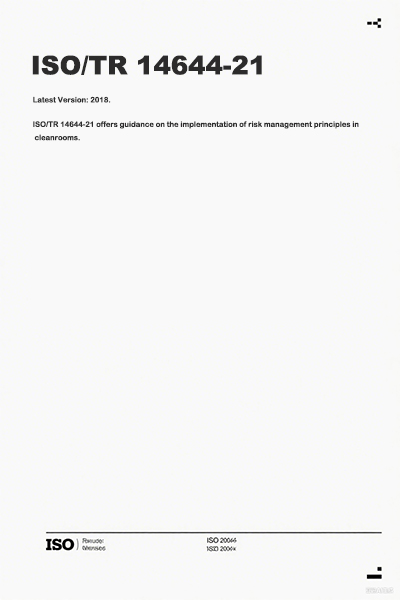
Cleanroom Risk Management
Conclusion
The ISO 14644 series offers comprehensive guidance for various aspects of cleanroom management, from monitoring surface cleanliness to implementing energy-efficient practices. By addressing specialized areas, these standards ensure cleanrooms operate effectively and efficiently across multiple applications. Adherence to these standards promotes operational integrity, supporting industries in maintaining high levels of product safety and quality.
 +86 18186671616
+86 18186671616 Jason@cleanroomequips.com
Jason@cleanroomequips.com
 MENU
MENU

